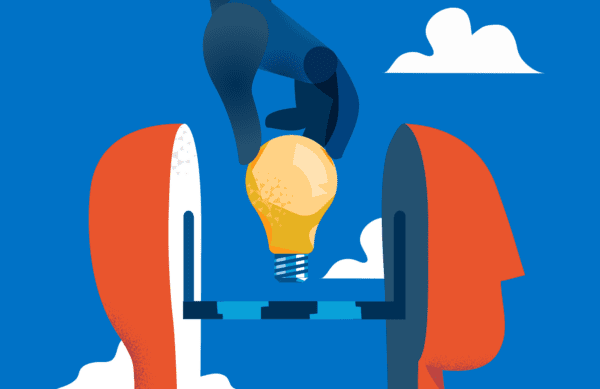Meet Lee Omar, Founder of Safe Steps. Safe Steps is a user-friendly falls risk screening, review and care planning tool which supports health and social care organisations to become self-sufficient in falls prevention. Read what he has to say about the personal background to his innovation, understanding the NHS as an entrepreneur and how the coronavirus (COVID-19) pandemic helped to shape the app features.
Tell us about your innovation – what and why?
Eight years ago, I was a carer for my Grandad who had dementia and cancer. He was living on his own in a flat and as he got older, he started to fall more. The NHS gave him a pendant alarm, but he wouldn’t wear it. The solutions suggested weren’t working for him. Then he had a particularly bad fall, so I wanted to see if I could do anything more to help.
I ran a tech company at the time, so I gave the team a challenge – help me get in touch with my Grandad quicker. We basically turned his flat into a lab with sensors everywhere and we became good at detecting when he fell, so I could get there quickly. Via the AHSNs, we were introduced to Wirral Council’s Director of Care and Health and Wirral Clinical Commissioning Group (CCG) who said they had a big problem with falls in care homes. They looked at our demo and asked us to co-design a falls prevention solution, so we developed the Safe Steps falls prevention app.
The app takes NICE guidelines and looks at the 12 risk areas associated with a fall, helps carers to identify them and then provides a personalised fall prevention plan.
In response to the pandemic, in March 2020 we also co-designed and developed the world’s first coronavirus management app for care homes which was deployed in April 2020. Our existing knowledge of care homes really helped this to happen quickly.
What was the ‘lightbulb’ moment?
For the falls prevention app, it was spending time in care homes. Once you spend time with the people, families, nurses and carers, you realise that there is a lot of complex care taking place in this setting to help people live longer. Some care homes are brilliant, some are terrible, there’s a huge continuum of care. We realised that there was no reason we couldn’t take best practice from the good care homes and academia, digitise it and scale it so that all could benefit.
Which AHSNs are you/have you been supported by?
We’ve had great support from the AHSNs. In fact, it was the Innovation Agency the Academic Health Science Network (AHSN) for the North West Coast, that connected us with the NHS and the local authority to co-develop Safe Steps in the first place, and they’ve been really supportive over the years. We also applied to the Digital Health.London Accelerator which connected us with the London AHSNs and also Health Innovation Manchester. Then we applied for the NHS Innovation Accelerator (NIA) as well which has been great. I’ve spoken to lots of the other AHSNs too, we just haven’t had time to follow up on further projects yet.
When you are an entrepreneur like me, you don’t necessarily understand what the NHS wants in terms of business cases, health economics etc. Health Innovation Manchester put us through a process where you’ve got to prove the value of the innovation, then they helped us with adoption and scaling and pitching to Integrated Care Systems (ICS). The Innovation Agency did something similar, they developed a business case for us to go to every care home in Cheshire and Mersey. I’d go so far as to say my business wouldn’t be here if it wasn’t for the AHSN Network.
The NIA is brilliant as well, it connects you with the best people in the country for your area, national clinical directors for example.
What’s been your toughest obstacle to date?
It’s the continual obstacle of not understanding things! Working with the NHS is kind of like going to China and only knowing three words of Chinese, you pick it up as you go along. The NHS is full of brilliant, smart, motivated people and it’s great because they’ll speak to you as a peer and presume you have the same knowledge as them, but you don’t always know what they are referencing and there’s a lot of jargon to understand. It’s a very steep learning curve.
What are your hopes for the future?
During the pandemic, we pivoted our service and came up with an idea for a simple app to help carers go through a checklist and work out what the best course of action would be for any given level of coronavirus symptoms. It’s been extremely well-received, and we’ve continued to add features to the app. Carers are now able to link in pulse oximetry data, coronavirus test results, and other useful health indicators to help GPs monitor patients.
We have a great reach into care homes, so we understand that sector well, better than a lot of the NHS does. If we could help join up NHS and care homes, keep people out of hospital, or for those at home, keep them in their own home for longer, that would be the problem we’d love to solve. We know that hospitals are struggling more than ever now as well.
As a company, we now have a package of apps to help manage deterioration. I hope this will go some way to achieving that goal. The only problem is, now that we’ve embarked on this new work, we’ve got an identity crisis because our name (Safe Steps) doesn’t quite fit with all the new products!
What’s the best part of your job?
Helping join up the NHS and social care system, and keeping people out of hospital, that’s what gets us up every day.
Helping carers in care homes is really rewarding too because they get a bad rep sometimes and often struggle with resources. There are some amazing people working in that field, so we want to help them.
Three pieces of advice for budding innovators?
- Think about the impact your innovation will make in terms of clinical outcomes and return on investment. How will it save the system money? At the start you often think I’m doing something good, so they’ll go for it, but you need more than that.
- Work with clinicians early because you’ll make lots of assumptions and most of them will be wrong. Get a clinical advisor in your team, it will save a lot of time and pain.
- Involve the end user or the patient early, place them at the centre of the design process, you’re more likely to create something sustainable.

Grace Gimson is the founder and CEO of Holly Health, a digital platform dedicated to transforming healthcare through preventive and person-centered digital health coaching. The platform aims to support individuals struggling with mental or physical health. Grace is a generalist with a background in operations, business leadership, and scaling tech startups such as Deliveroo. [...]

HN (Health Navigator) is an AI-powered health innovation that enables preventative care through predictive analytics. Founded in Sweden by Dr Joachim Werr, a former A&E consultant, HN is now supporting healthcare systems across the UK to identify high-risk patients before they reach crisis point. Joachim shares the journey behind HN and the transformative impact of [...]

The government has set out three shifts it wants to see happen: treatment to prevention, hospital to community, analogue to digital. HealthTech has a crucial role in supporting the delivery of all three. But using technology to help deliver these changes requires procuring the technology, and when all the noise is about there being no [...]









